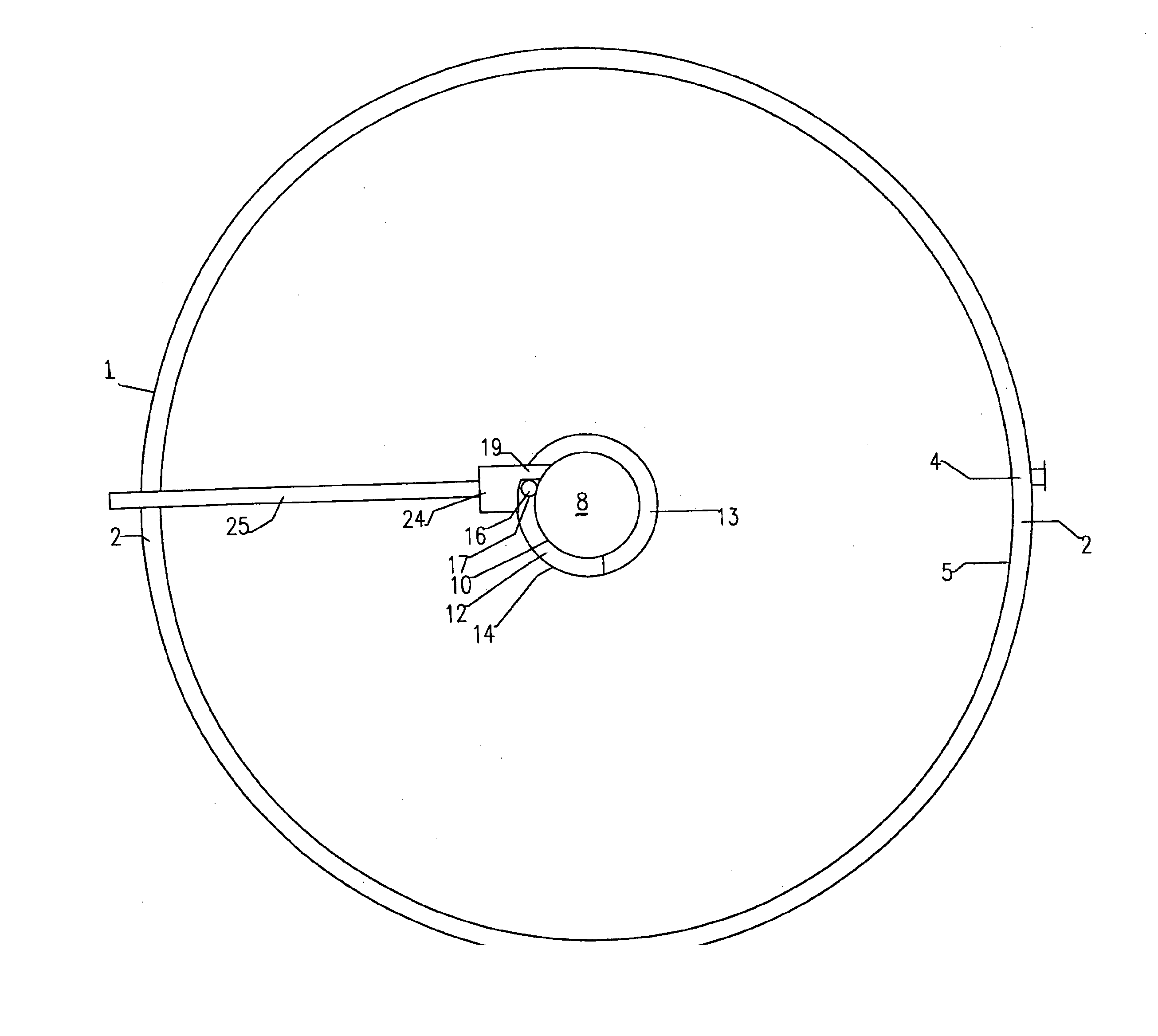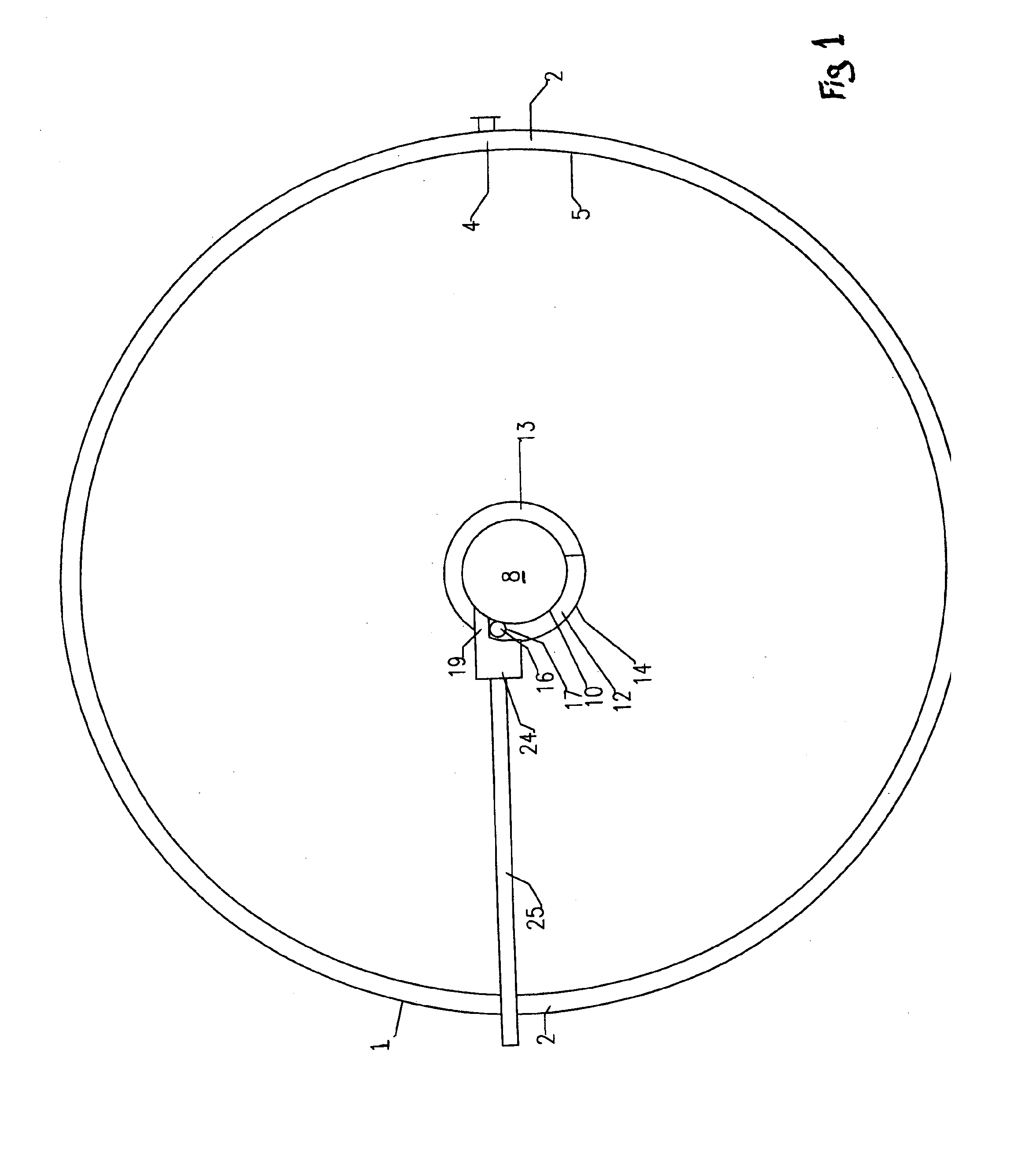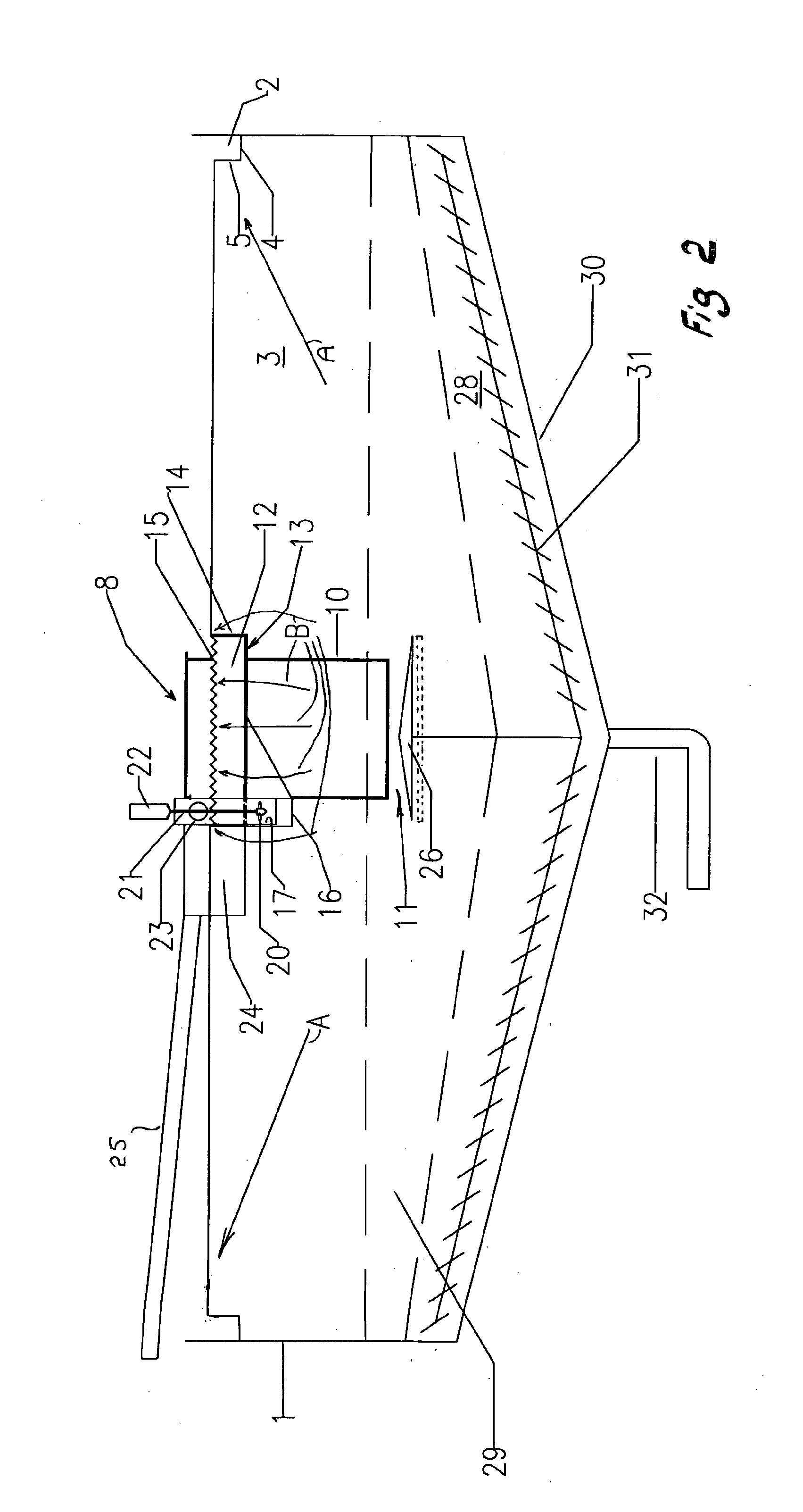"improvement in or relating to thickeners having self-diluting feedwell"
a thickener and self-diluting technology, which is applied in the direction of sedimentation settling tanks, liquid displacement, separation processes, etc., can solve the problems of increased construction costs associated with the provision of a larger tank, lack of good control, and simple use of gravity and differential densities, so as to improve the flow pattern of liquid inside the tank, save the cost of flocculent, and reduce the cost of consumables
- Summary
- Abstract
- Description
- Claims
- Application Information
AI Technical Summary
Benefits of technology
Problems solved by technology
Method used
Image
Examples
Embodiment Construction
[0020]FIG. 1 shows an upright cylindrical thickening tank 1 having a peripheral overflow launder 2 extending around the inside of an upper portion 3 of the tank. The launder is closed at its base 4 and it has an inner cylindrical wall 5. Supernatant liquid from the upper portion 3 of the tank 1 flows symmetrically in a radially outwards direction into the launder 2.
[0021]A feed well shown generally at 8 is mounted in the central region of the upper portion 3 of the thickener tank 1 and comprises a cylindrical casing 10 open at its underside 11 and surrounded by a second launder 12 arranged slightly beneath the level of the overflow launder 2. The second launder has its base 13 closed and its external wall 14 is formed with a V-notch weir 15 or horizontal wet edge which allows supernatant liquid to enter the launder. The second launder may be formed with circumferentially-spaced parts (not shown) which are individually vertically adjustable in a controlled manner to ensure a smooth a...
PUM
| Property | Measurement | Unit |
|---|---|---|
| shape | aaaaa | aaaaa |
| size | aaaaa | aaaaa |
| flocculation | aaaaa | aaaaa |
Abstract
Description
Claims
Application Information
 Login to View More
Login to View More - R&D
- Intellectual Property
- Life Sciences
- Materials
- Tech Scout
- Unparalleled Data Quality
- Higher Quality Content
- 60% Fewer Hallucinations
Browse by: Latest US Patents, China's latest patents, Technical Efficacy Thesaurus, Application Domain, Technology Topic, Popular Technical Reports.
© 2025 PatSnap. All rights reserved.Legal|Privacy policy|Modern Slavery Act Transparency Statement|Sitemap|About US| Contact US: help@patsnap.com



